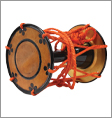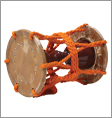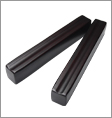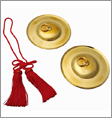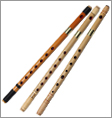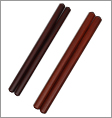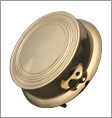
Referred to by different names (such as Kane and Konchiki) depending on the region, Atarigane is a compact instrument that fits easily into the palm of your hand. Atarigane is played with a Shimoku, which is a bamboo stick with a piece of deer horn attached to its end. It often plays a guiding role in the ensemble, and with its delightful sound, can greatly broaden the variety of ensemble performances. In the Kansai region, 1 shaku (33 cm) Atarigane are used for the Danjiri Bayashi. The sound of Atarigane is considered a representative sound of the Osaka Tenjin Matsuri, one of the three greatest festivals in Japan.
The instrument was originally called Surigane. However, the people of Edo (Tokyo) disliked the name because of its association with the word "suru," which means to use up one's fortune in gambling. They hence came up with the alternative name Atarigane, derived from the word "ataru," which means to make the right guess (i.e. win in gambling). In the Kansai region, Atarigane is sometimes referred to as Soroban (meaning "abacus").
